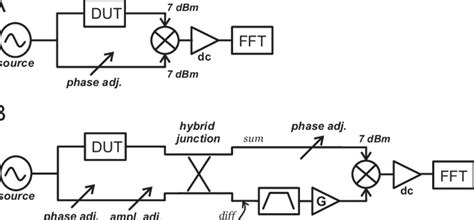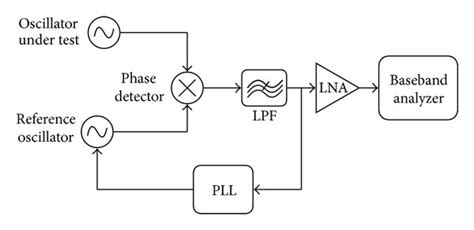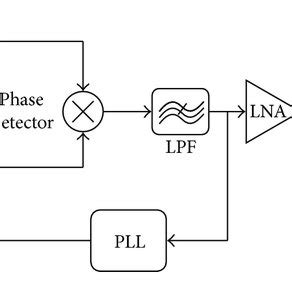Introduction to Phase Noise Measurement
Phase noise is a critical parameter in high-speed signal analysis, as it can significantly impact the performance of communication systems, radar, and other applications that rely on stable and accurate signal timing. Phase noise refers to the random fluctuations in the phase of a signal, which can be caused by various factors such as thermal noise, power supply variations, and device nonlinearities.
Measuring phase noise is essential for characterizing the quality and stability of high-speed signals, and for identifying sources of signal degradation. In this article, we will explore the techniques and tools used for phase noise measurement, and provide a comprehensive guide on how to take accurate and reliable measurements of high-speed signals.
Importance of Phase Noise Measurement in High-Speed Signals
High-speed signals, such as those used in communication systems and radar applications, require precise timing and stable frequencies to function properly. Phase noise can introduce significant timing jitter and frequency instability, which can degrade the performance of these systems.
For example, in a digital communication system, phase noise can cause bit errors and reduce the overall data throughput. In a radar system, phase noise can reduce the detection range and accuracy, and create false targets or missed detections.
Therefore, measuring and characterizing phase noise is crucial for ensuring the proper operation and performance of high-speed systems. By understanding the sources and magnitude of phase noise, engineers can design more robust and reliable systems, and optimize their performance for specific applications.

Techniques for Phase Noise Measurement
There are several techniques used for measuring phase noise in high-speed signals, each with its own advantages and limitations. The choice of technique depends on factors such as the frequency range of interest, the required measurement accuracy, and the available equipment and resources.
Direct Spectrum Measurement
One of the most straightforward techniques for measuring phase noise is direct spectrum measurement using a spectrum analyzer. In this technique, the signal under test is connected to the input of the spectrum analyzer, and the power spectrum of the signal is displayed on the screen.
The phase noise can be measured by observing the power level of the signal at different frequency offsets from the carrier frequency. The phase noise is typically expressed in dBc/Hz, which represents the power level of the noise relative to the carrier power, normalized to a 1 Hz bandwidth.
| Offset Frequency (Hz) | Phase Noise (dBc/Hz) |
|---|---|
| 100 | -70 |
| 1k | -90 |
| 10k | -110 |
| 100k | -130 |
Table 1: Example phase noise measurement results using direct spectrum measurement.
While direct spectrum measurement is simple and straightforward, it has some limitations. The dynamic range of the measurement is limited by the noise floor of the spectrum analyzer, which can be quite high for wide bandwidth measurements. Additionally, the frequency resolution of the measurement is limited by the resolution bandwidth (RBW) of the spectrum analyzer, which can be insufficient for measuring close-in phase noise.
Phase Detector Method
Another technique for measuring phase noise is the phase detector method, which uses a phase-locked loop (PLL) to compare the phase of the signal under test with a reference signal. The phase detector output represents the instantaneous phase difference between the two signals, which can be analyzed to determine the phase noise.
The phase detector method has some advantages over direct spectrum measurement, such as higher dynamic range and better close-in phase noise sensitivity. However, it requires a stable and low-noise reference signal, which can be challenging to generate at high frequencies.
Two-Channel Cross-Correlation Method
The two-channel cross-correlation method is a more advanced technique for measuring phase noise, which uses two identical measurement channels to cancel out the uncorrelated noise and improve the measurement sensitivity.
In this technique, the signal under test is split into two identical paths, each connected to a separate phase detector. The outputs of the two phase detectors are then cross-correlated to cancel out the uncorrelated noise, resulting in a significant improvement in the measurement sensitivity.
| Offset Frequency (Hz) | Phase Noise (dBc/Hz) |
|---|---|
| 100 | -120 |
| 1k | -140 |
| 10k | -160 |
| 100k | -180 |
Table 2: Example phase noise measurement results using the two-channel cross-correlation method.
The two-channel cross-correlation method can achieve very high measurement sensitivity, with noise floors approaching -180 dBc/Hz or better. However, it requires a more complex and expensive measurement setup, including two identical measurement channels and a cross-correlation algorithm.

Tools and Equipment for Phase Noise Measurement
To perform accurate and reliable phase noise measurements, it is important to use the appropriate tools and equipment. Some of the key tools and equipment used for phase noise measurement include:
Spectrum Analyzer
A spectrum analyzer is a basic tool for measuring the power spectrum of a signal, including its phase noise. Modern spectrum analyzers offer a wide range of features and capabilities, such as high dynamic range, low noise floor, and advanced triggering and analysis functions.
When selecting a spectrum analyzer for phase noise measurement, it is important to consider factors such as the frequency range, dynamic range, noise floor, and resolution bandwidth. For high-speed signals, a spectrum analyzer with a wide bandwidth and high dynamic range is typically required.
Phase Noise Analyzer
A phase noise analyzer is a specialized instrument designed specifically for measuring phase noise in high-speed signals. Phase noise analyzers typically use the phase detector method or the two-channel cross-correlation method to achieve high measurement sensitivity and accuracy.
Phase noise analyzers offer a range of features and capabilities, such as real-time signal analysis, advanced triggering and data capture, and integrated signal sources and reference oscillators. They also provide a user-friendly interface and automated measurement routines to simplify the measurement process.
Signal Source
To perform phase noise measurements, a stable and low-noise signal source is required. The signal source should have a high frequency stability and low phase noise, to ensure accurate and reliable measurements.
There are several types of signal sources used for phase noise measurement, including:
- Crystal oscillators: High-stability crystal oscillators offer excellent frequency stability and low phase noise, but are limited to relatively low frequencies (typically below 100 MHz).
- Synthesizers: Frequency synthesizers can generate high-frequency signals with good frequency stability and low phase noise, but may have higher noise floor than other types of sources.
- atomic clocks: Atomic clocks, such as cesium or rubidium standards, offer the highest frequency stability and lowest phase noise, but are expensive and bulky.
Cables and Connectors
The cables and connectors used in the measurement setup can also have a significant impact on the measurement accuracy and repeatability. It is important to use high-quality, low-loss cables and connectors, and to ensure proper termination and impedance matching.
For high-frequency measurements, it is also important to use cables and connectors with good shielding and low reflections, to minimize signal distortion and interference.

Best Practices for Phase Noise Measurement
To ensure accurate and reliable phase noise measurements, it is important to follow some best practices and guidelines. Some of the key considerations include:
Measurement Setup
The measurement setup should be carefully designed and optimized for the specific measurement requirements. This includes selecting the appropriate tools and equipment, as well as configuring the measurement parameters such as frequency range, resolution bandwidth, and averaging.
It is also important to ensure proper grounding and shielding of the measurement setup, to minimize noise and interference. The use of a Faraday cage or shielded enclosure can help to reduce external noise and improve the measurement sensitivity.
Signal Conditioning
In some cases, it may be necessary to condition the signal under test before performing the phase noise measurement. This can include filtering, amplification, or attenuation of the signal to optimize the measurement dynamic range and sensitivity.
Signal conditioning can also help to remove unwanted signals or interference, such as harmonics or spurious signals, which can affect the measurement accuracy.
Calibration and Verification
To ensure the accuracy and reliability of the phase noise measurements, it is important to perform regular calibration and verification of the measurement equipment. This includes calibrating the spectrum analyzer or phase noise analyzer, as well as verifying the performance of the signal source and other components.
Calibration and verification should be performed using traceable standards and procedures, and the results should be documented and recorded for future reference.
Conclusion
Phase noise is a critical parameter in the characterization and analysis of high-speed signals, and accurate and reliable phase noise measurements are essential for ensuring the proper operation and performance of communication systems, radar, and other applications.
There are several techniques and tools available for measuring phase noise, each with its own advantages and limitations. By understanding the different measurement methods and best practices, engineers can select the most appropriate approach for their specific measurement requirements, and achieve high accuracy and repeatability in their phase noise measurements.
Frequently Asked Questions
-
What is phase noise, and why is it important to measure?
Phase noise refers to the random fluctuations in the phase of a signal, which can introduce timing jitter and frequency instability. Measuring phase noise is important for characterizing the quality and stability of high-speed signals, and for identifying sources of signal degradation. -
What are the different techniques used for measuring phase noise?
The main techniques used for measuring phase noise include direct spectrum measurement, phase detector method, and two-channel cross-correlation method. Each technique has its own advantages and limitations, and the choice of technique depends on factors such as the frequency range of interest, the required measurement accuracy, and the available equipment and resources. -
What are the key tools and equipment used for phase noise measurement?
The key tools and equipment used for phase noise measurement include spectrum analyzers, phase noise analyzers, signal sources, and high-quality cables and connectors. The choice of equipment depends on the specific measurement requirements and the desired level of accuracy and sensitivity. -
What are some best practices for ensuring accurate and reliable phase noise measurements?
Some best practices for phase noise measurement include careful design and optimization of the measurement setup, proper signal conditioning, regular calibration and verification of the measurement equipment, and the use of traceable standards and procedures. It is also important to ensure proper grounding and shielding of the measurement setup, to minimize noise and interference. -
What are some common applications of phase noise measurement?
Phase noise measurement is used in a wide range of applications, including communication systems, radar, aerospace and defense, and scientific research. Accurate and reliable phase noise measurements are essential for ensuring the proper operation and performance of these systems, and for identifying and mitigating sources of signal degradation.

No responses yet